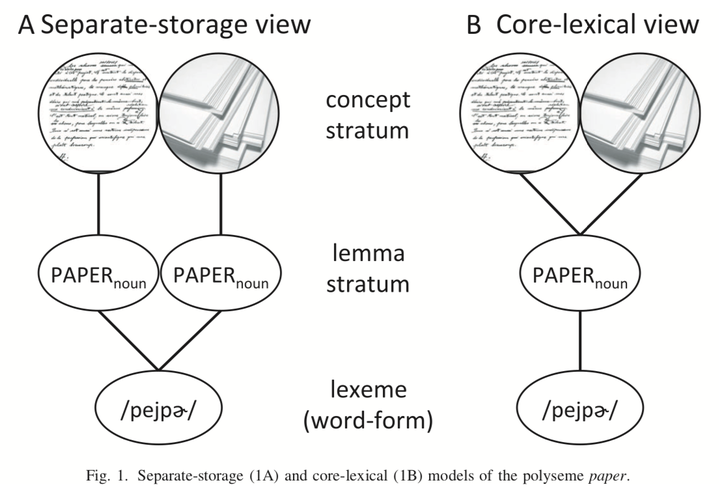
Abstract
Every word signifies multiple senses. Many studies using comprehension‐based measures suggest that polysemes’ senses (e.g., paper as in printer paper or term paper) share lexical representations, whereas homophones’ meanings (e.g., pen as in ballpoint pen or pig pen) correspond to distinct lexical representations. Less is known about the lexical representations of polysemes compared to homophones in language production. In this study, speakers named pictures after reading sentence fragments that primed polysemes and homophones either as direct competitors to pictures (i.e., semantic‐competitors), or as indirect‐competitors to pictures (e.g., polysemous senses of semantic competitors, or homophonous meanings of semantic competitors). Polysemes (e.g., paper) elicited equal numbers of intrusions to picture names (e.g., cardboard) compared to in control conditions whether primed as direct competitors (printer paper) or as indirect‐competitors (term paper). This contrasted with the finding that homophones (e.g., pen) elicited more intrusions to picture names (e.g., crayon) compared to in control conditions when primed as direct competitors (ballpoint pen) than when primed as indirect‐competitors (pig pen). These results suggest that polysemes, unlike homophones, are stored and retrieved as unified lexical representations.